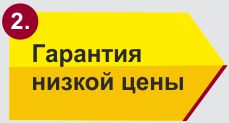Оценка Зачтено 100% (Задание и скрин оценки прилагается к работе)
2. Обязательные задания для выполнения обучающимися
Необходимо выполнить для получения зачета в 3-м семестре.
В обязательном порядке обучающийся должен письменно перевести один из предложенных текстов и выполнить все задания к тексту:
Текст1.
Budget
The process of calculating the costs of
starting a small business begins with a list of all necessary purchases
including tangible assets (for example, equipment, inventory) and
services (for example, remodeling, insurance), working capital, sources
and collateral. The budget should contain a narrative explaining how you
decided on the amount of this reserve and a description of the expected
financial results of business activities. The assets should be valued
with each and every cost. All other expenses are like labour factory
overhead all freshmen expenses are also included into business
budgeting.
The budget of a company is often
compiled annually, but may not be. A finished budget, usually requiring
considerable effort, is a plan for the short-term future, typically one
year. While traditionally the Finance department compiles the company's
budget, modern software allows hundreds or even thousands of people in
various departments (operations, human resources, IT, etc.) to list
their expected revenues and expenses in the final budget.
If the actual figures delivered through
the budget period come close to the budget, this suggests that the
managers understand their business and have been successfully driving it
in the intended direction. On the other hand, if the figures diverge
wildly from the budget, this sends an 'out of control' signal, and the
share price could suffer as a result.
A budget is a fundamental tool for an
event director to predict with reasonable accuracy whether the event
will result in a profit, a loss or will break-even. A budget can also be
used as a pricing tool.
There are two basic approaches or
philosophies when it comes to budgeting. One approach focuses on
mathematical models, and the other on people.
The first school of thought believes
that financial models, if properly constructed, can be used to predict
the future. The focus is on variables, inputs and outputs, drivers and
the like. Investments of time and money are devoted to perfecting these
models, which are typically held in some type of financial spreadsheet
application.
The other school of thought holds that
it’s not about models, it’s about people. No matter how sophisticated
models can get, the best information comes from the people in the
business. The focus is therefore in engaging the managers in the
business more fully in the budget process, and building accountability
for the results. The companies that adhere to this approach have their
managers develop their own budgets. While many companies would say that
they do both, in reality the investment of time and money falls squarely
in one approach or the other.
1. Переведите следующие слова и выражения на русский язык.
|
1. to predict with reasonable accuracy
|
6. financial models
|
|
2. overhead expenses
|
7. human resources department
|
|
3. business budgeting
|
8. financial spreadsheet
|
|
4. mathematical models
|
9. inputs and outputs
|
|
5. profit
|
10. compile budget
|
2. Выберите правильный вариант ответа.
1. The budget of a company is usually compiled ……….
a) every week b) every month c) annually
2. ……… is a fundamental tool to predict with reasonable accuracy
whether the event will result in a profit, a loss or will break-even.
a) budget b) financial model c) overhead expense
3. Traditionally the ………. compiles the company's budget.
a) manager b) accountant c) Finance department
4. When a company owns some material things they are called ………
a) liabilities b) tangible assets c) intangible assets
5. The managers involved in the budget process have …………….
a) responsibility b) duties c) accountability
3. Ответьтенавопросы.
1. What is a budget?
2. What should the budget contain?
3. Who compiles the budget?
4. What two basic approaches are used in budgeting?
5. How often is budget compiled?
Текст 2.
Microeconomics
Microeconomics, like macroeconomics, is
a fundamental method for analyzing the economy as a system. It treats
households and firms interacting through individual markets as
irreducible elements of the economy, given scarcity and government
regulation. A market might be for a product, say fresh corn, or the
services of a factor of production, say bricklaying. The theory
considers aggregates of quantity demanded by buyers and quantity
supplied by sellers at each possible price per unit. It combines these
together to describe how the market may reach equilibrium as to price
and quantity or respond to market changes over time.
Such analysis includes the theory of
supply and demand. It also examines market structures, such as perfect
competition and monopoly for implications as to behavior and economic
efficiency. Analysis of change in a single market often proceeds from
the simplifying assumption that relations in other markets remain
unchanged, that is, partial-equilibrium analysis. General-equilibrium
theory allows for changes in different markets and aggregates across all
markets, including their movements and interactions toward
equilibrium.Here economists distinguish between Production theory,
Opportunity cost, Economic efficiency, and Production-possibility
frontier.
In microeconomics, production is the
conversion of inputs into outputs. It is an economic process that uses
inputs to create a commodity for exchange or direct use. Production is a
flow and thus a rate of output per period of time. Distinctions include
such production alternatives as for consumption (food, haircuts, etc.)
vs. investment goods (new tractors, buildings, roads, etc.), public
goods (national defense, small-pox vaccinations, etc.) or private goods
(new computers, bananas, etc.), and "guns" vs. "butter".
Opportunity cost refers to the economic
cost of production: the value of the next best opportunity foregone.
Choices must be made between desirable yet mutually exclusive actions.
It has been described as expressing "the basic relationship between
scarcity and choice.". The opportunity cost of an activity is an element
in ensuring that scarce resources are used efficiently, such that the
cost is weighed against the value of that activity in deciding on more
or less of it. Opportunity costs are not restricted to monetary or
financial costs but could be measured by the real cost of output
forgone, leisure, or anything else that provides the alternative
benefit.
Inputs used in the production process
include such primary factors of production as labour services, capital
(durable produced goods used in production, such as an existing
factory), and land (including natural resources). Other inputs may
include intermediate goods used in production of final goods, such as
the steel in a new car.
Economic efficiency describes how well a
system generates desired output with a given set of inputs and
available technology. Efficiency is improved if more output is generated
without changing inputs, or in other words, the amount of "waste" is
reduced. A widely-accepted general standard is Pareto efficiency, which
is reached when no further change can make someone better off without
making someone else worse off.
1. Переведите следующие слова и выражения на русский язык.
|
1. production theory
|
6. mutually exclusive actions
|
|
2. inputs and outputs
|
7. market changes
|
|
3. goods and services
|
8. real cost
|
|
4. monopoly
|
9. buyers and sellers
|
|
5. market structure
|
10. public goods
|
2. Выберите правильный вариант ответа.
1. A fundamental method for analyzing the economy as a system is …….
a) government regulation b) microeconomics c) production theory
2. Labour services, capital and land are called ……..
a) production process b) costs c) factors of production
3. The market may reach ………. when price and quantity balance.
a) equilibrium b) balance c) equation
4. ………. is the conversion of inputs into outputs.
a) distribution b) consumption c) production
5. ……. include new buildings, trucks, roads, etc.
a) investment goods b) public goods c) private goods
3. Ответьте на вопросы.
1. What is microeconomics?
2. What does economic efficiency describe?
3. What is production?
4. How can a market reach equilibrium?
5. What do factors of production include?








